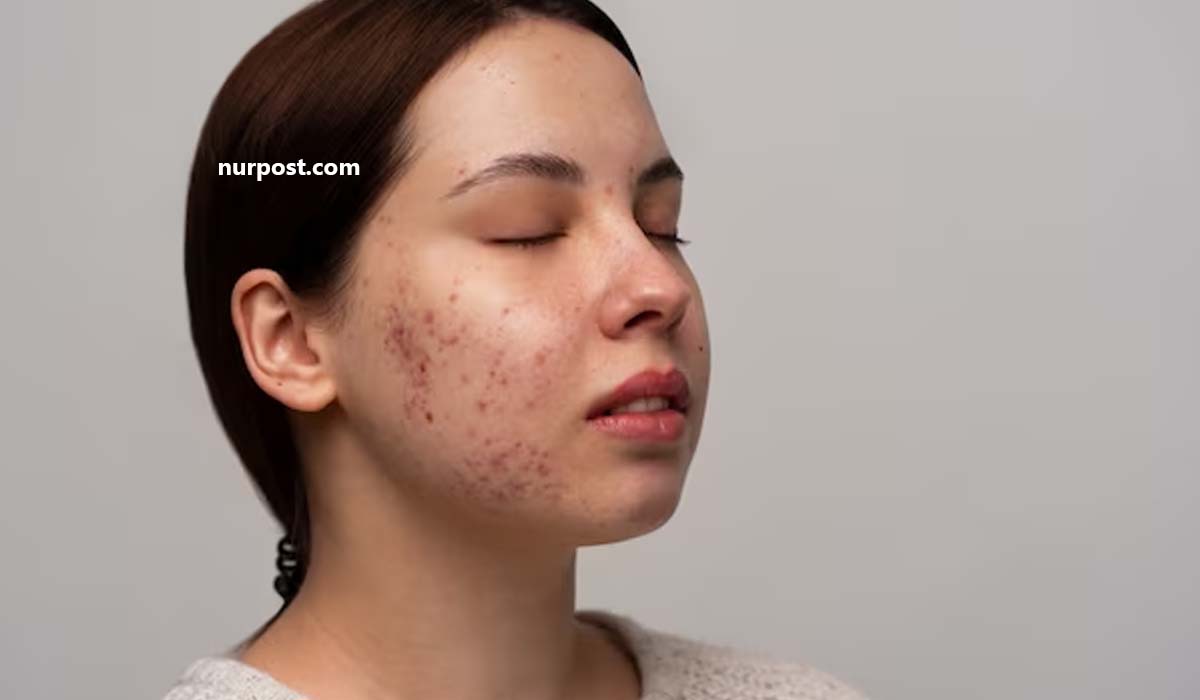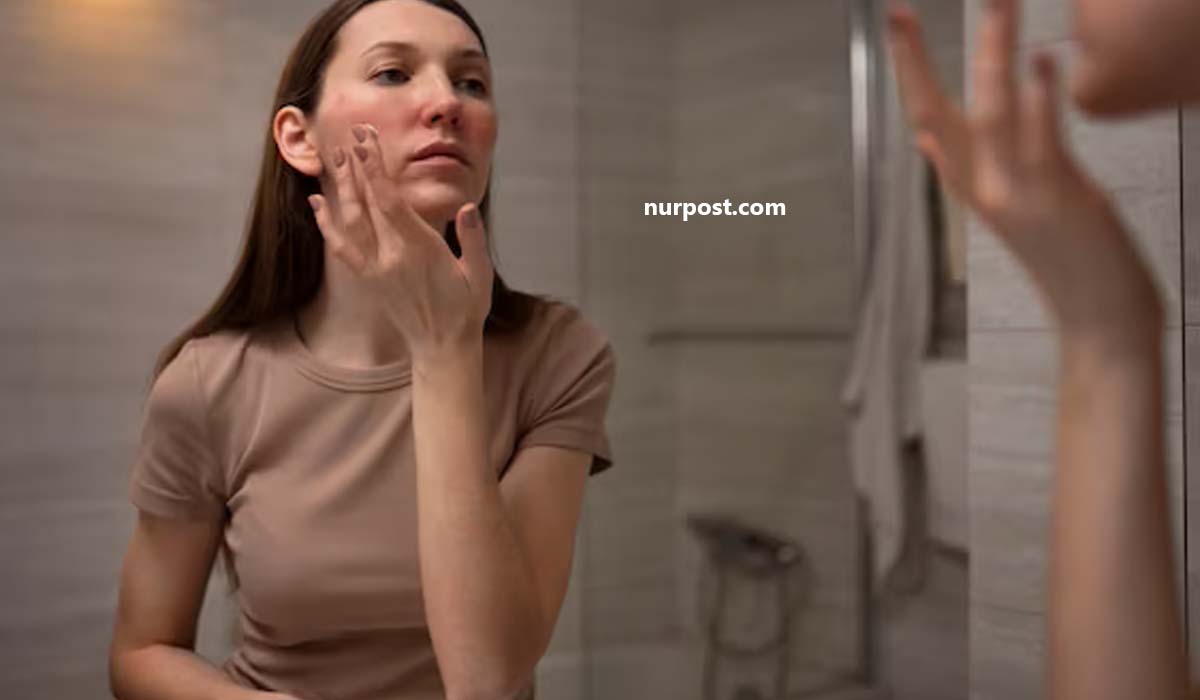Rosacea Identifying Signs, Diagnosis and Treatment where Rosacea is a chronic condition that affects the skin and sometimes the eyes.
Rosacea Identifying Signs, Diagnosis and Treatment
It is characterized by redness, flushing, and pimples. Rosacea can occur at any age.
But it is most common in middle-aged women. There is no cure for rosacea, but treatment can control the symptoms.
Rosacea is a common but often misunderstood condition that is estimated to affect more than 16 million Americans.
The cause of rosacea is unknown, and there is no cure. However, treatments are available to control the signs and symptoms.
What is rosacea?
Rosacea is a chronic (long-lasting) and progressive disease that affects the skin and sometimes the eyes.
It typically begins as redness on the central face and cheeks, and can cause swelling and bumps on the face.
What are the symptoms of rosacea?
The signs and symptoms of rosacea can vary from person to person. They may include:
- Redness of the face, especially the central part
- Small, red, pus-filled bumps (papules)
- Swelling and redness (inflammation) of the eyes
- Watery or bloodshot eyes
- Burning, stinging, or itching sensation on the face
- Thickening of the skin
- Dryness and scaling of the skin
- Crusting of the skin
- Enlargement of the blood vessels in the skin
- Eye problems, such as dryness, itching, burning, and tearing
What causes rosacea?
The cause of rosacea is unknown. It is thought to be due to a combination of genetic and environmental factors. Rosacea is not caused by poor hygiene or by eating spicy foods.
Who is at risk for rosacea?
Rosacea is most common in adults 30-60 years old. It is more common in women than in men, and is more common in fair-skinned people than in dark-skinned people. Rosacea is more common in people of Celtic or Scandinavian descent.
How is rosacea diagnosed?
Rosacea is diagnosed based on a medical history and physical examination. There is no specific test for rosacea. The diagnosis is made based on the signs and symptoms present.
How is rosacea treated?
There is no cure for rosacea, but treatments are available to control the signs and symptoms. The type of treatment that is used will depend on the severity of the condition.
Mild rosacea can be treated with over-the-counter topical products. These include creams, gels, and lotions that contain ingredients such as metronidazole, sulfacetamide, or azelaic acid.
Moderate to severe rosacea may require prescription oral or topical medications. These include antibiotics, isotretinoin, and laser therapy.
How can rosacea be prevented?
There is no way to prevent rosacea. However, avoiding triggers that can worsen the condition can help to control the signs and symptoms. Triggers can include:
- Sun exposure
- Wind
- Hot weather
- Cold weather
- Stress
- Alcohol
- Hot beverages
- Spicy foods
When should I see a doctor?
See your doctor if you have signs or symptoms of rosacea. Your doctor can diagnose rosacea and develop a treatment plan.
Rosacea is a chronic, inflammatory skin condition that primarily affects the face. It is characterized by redness, flushing, and pimples. Rosacea can also cause eye irritation and inflammation.

The exact cause of rosacea is unknown, but it is believed to be a combination of genetic and environmental factors. Rosacea is more common in women and people with fair skin, but it can affect anyone.
There is no cure for rosacea, but treatments can help improve the appearance of the skin and manage symptoms.
Primarily Affects of Rosacea
Rosacea is a chronic, inflammatory skin condition that primarily affects the face. It is characterized by redness, flushing, and pimples. Rosacea can also cause eye irritation and inflammation.
The exact cause of rosacea is unknown, but it is believed to be a combination of genetic and environmental factors. Rosacea is more common in women and people with fair skin, but it can affect anyone.
There is no cure for rosacea, but treatments can help improve the appearance of the skin and manage symptoms.
Complex and Chronic Disease Rosacea
Rosacea is a complex and chronic disease that is still not fully understood by the medical community. Its causes remain unknown, and there is no cure.
However, there are treatments available that can help control the symptoms and improve the quality of life for those affected.
There is a lot of controversy surrounding the diagnosis and treatment of rosacea. Some experts believe that the condition is underdiagnosed.
While others believe that it is often misdiagnosed as acne or allergies. Because of this, it is important to see a dermatologist or other specialist who is familiar with the condition.
Best Treatment of Rosacea
There is no one-size-fits-all approach to treating rosacea. The best treatment plan will be tailored to the individual.
Taking into account the severity of the condition and the person’s preferences. Common treatments include topical creams and gels, oral medications, and laser therapy.
Rosacea Identifying Signs
Looking to the future, there is a need for more research into the causes of rosacea and more effective treatments. In the meantime, education is crucial for both patients and healthcare providers.
Patients need to be aware of the signs and symptoms of rosacea and know when to seek help. Healthcare providers need to be familiar with the condition and able to properly diagnose and treat it.
What is Rosacea?
Rosacea is a common, chronic, incurable, visible facial skin condition. This is characterized by flared capillaries, redness, pustules and often diagnosed by exclusion.
Rosacea Identifying Signs
Rosacea symptoms and signs include. There is no medical cure for rosacea. However, effective treatments are available that may control symptoms and signs to an extent that one’s life is not unduly affected.
How do you get Rosacea?
The exact cause of rosacea is unknown. A number of possible causes have been suggested, but none has been proven. Rosacea is not caused by poor hygiene.
Is Rosacea contagious?
No. Rosacea is not contagious and cannot be passed on to another person.
Can rosacea be cured?
There is no medical cure for rosacea. However, effective treatments are available that may control symptoms and signs to an extent that one’s life is not unduly affected.
What triggers rosacea?
There is no definitive answer to this question as triggers vary from person to person. However, common triggers include sun exposure, stress, hot weather, wind, strenuous exercise, alcohol consumption and spicy foods.
How is rosacea treated?
There is no one-size-fits-all approach to treating rosacea as each person’s symptoms and triggers are unique.
However, treatments that may be effective include lifestyle changes, topical therapies, oral medications and, in some cases, laser and other light treatments.
Can rosacea be prevented?
There is no sure way to prevent rosacea. However, avoiding known triggers, using sunscreen and protecting your skin from the sun’s rays, and managing stress may help to reduce your risk of flare-ups.
What are the signs and symptoms of rosacea?
The signs and symptoms of rosacea can vary from person to person. The most common symptoms include redness, flushing, bumps and pimples.
However, rosacea can also cause burning and stinging sensations, dryness and scaling, eye irritation and in some cases, enlargement of the nose.
Who is at risk for rosacea?
Rosacea is most common in people with fair skin, and affects women more often than men. However, anyone can develop rosacea, and the condition can occur at any age.
What are the complications of Rosacea?
The most common complication of rosacea is Eyelid inflammation (blepharitis). Rosacea can also lead to a condition called ocular rosacea, which affects the eyes and can cause vision problems.
In rare cases, rosacea can progress to a severe form called rhinophyma, which results in a swollen, bulbous nose.

Rosacea is a skin condition that affects approximately 16 million people in the U.S. It is characterized by redness, inflammation, and often pimples.
Rosacea Identifying Signs
Rosacea can be a source of frustration and insecurity for many people. There is no cure for rosacea, but there are treatments that can help manage the symptoms.
What Causes Rosacea?
The exact cause of rosacea is unknown, but there are several theories. One theory is that rosacea is caused by a combination of genetic and environmental factors.
Another theory is that rosacea is an inflammatory response to the presence of Demodex mites on the skin. Demodex mites are tiny creatures that live on the skin.
What Are the Signs and Symptoms of Rosacea?
The most common symptom of rosacea is redness of the face. Other symptoms include small, red bumps or pimples, burning or stinging sensations, dryness, and itching.
Some people with rosacea also experience swelling of the face and enlarged blood vessels.
How Is Rosacea Diagnosed?
There is no one test that can diagnose rosacea. A diagnosis is usually made based on a medical history and a physical examination. Your doctor may also recommend a skin biopsy.
This is a test in which a small piece of skin is removed and examined under a microscope.
How Is Rosacea Treated?
There is no cure for rosacea, but there are treatments that can help manage the symptoms.
Treatment options include topical and oral medications, laser and light therapies, and surgery.
The Bottom Line
Rosacea is a common skin condition that affects approximately 16 million people in the U.S. It is characterized by redness, inflammation, and often pimples.
There is no cure for rosacea, but there are treatments that can help manage the symptoms.
